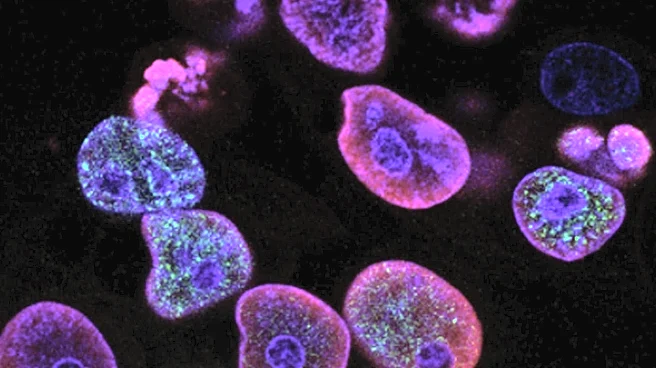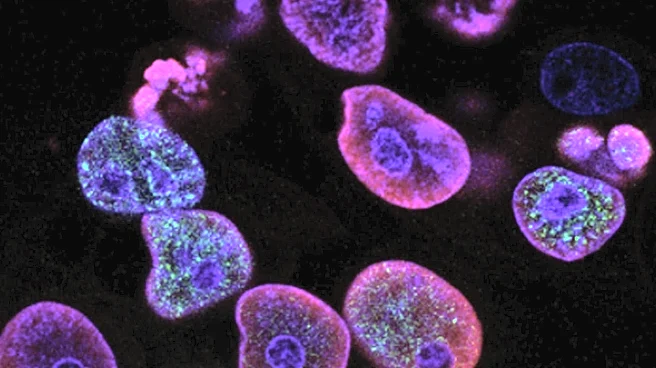What's Happening?
A recent study has highlighted the potential of circulating tumor cells (CTCs) detected by Next Generation Flow Cytometry (NGF) as a prognostic biomarker for patients with asymptomatic monoclonal gammopathies, such as smoldering myeloma (SMM) and monoclonal gammopathy
of undetermined significance (MGUS). The study involved 253 patients and found that CTCs were detectable in 35.6% of the cohort, with a higher prevalence in SMM patients compared to MGUS. The presence of CTCs was associated with a higher risk of progression to symptomatic myeloma, suggesting their potential as a non-invasive tool for risk stratification.
Why It's Important?
The identification of CTCs as a prognostic biomarker is significant for the management of monoclonal gammopathies. It offers a non-invasive method to assess the risk of disease progression, which could lead to earlier interventions and improved patient outcomes. This development could change the standard approach of 'watchful waiting' by providing a more precise risk stratification, allowing for tailored treatment plans. The study's findings align with previous research, reinforcing the role of CTCs in understanding disease dynamics and potentially guiding therapeutic decisions.
What's Next?
Further research is needed to establish standardized cutoff values for CTC levels to ensure consistency in clinical practice. Long-term studies could provide more insights into the role of CTCs in MGUS and their potential to predict disease progression. The integration of CTC analysis with other biomarkers could enhance risk stratification and inform early intervention strategies, potentially leading to a shift in how monoclonal gammopathies are managed.













